Unlock the Full Value of FinOps
By enabling safe, continuous optimization under clear policies and guardrails
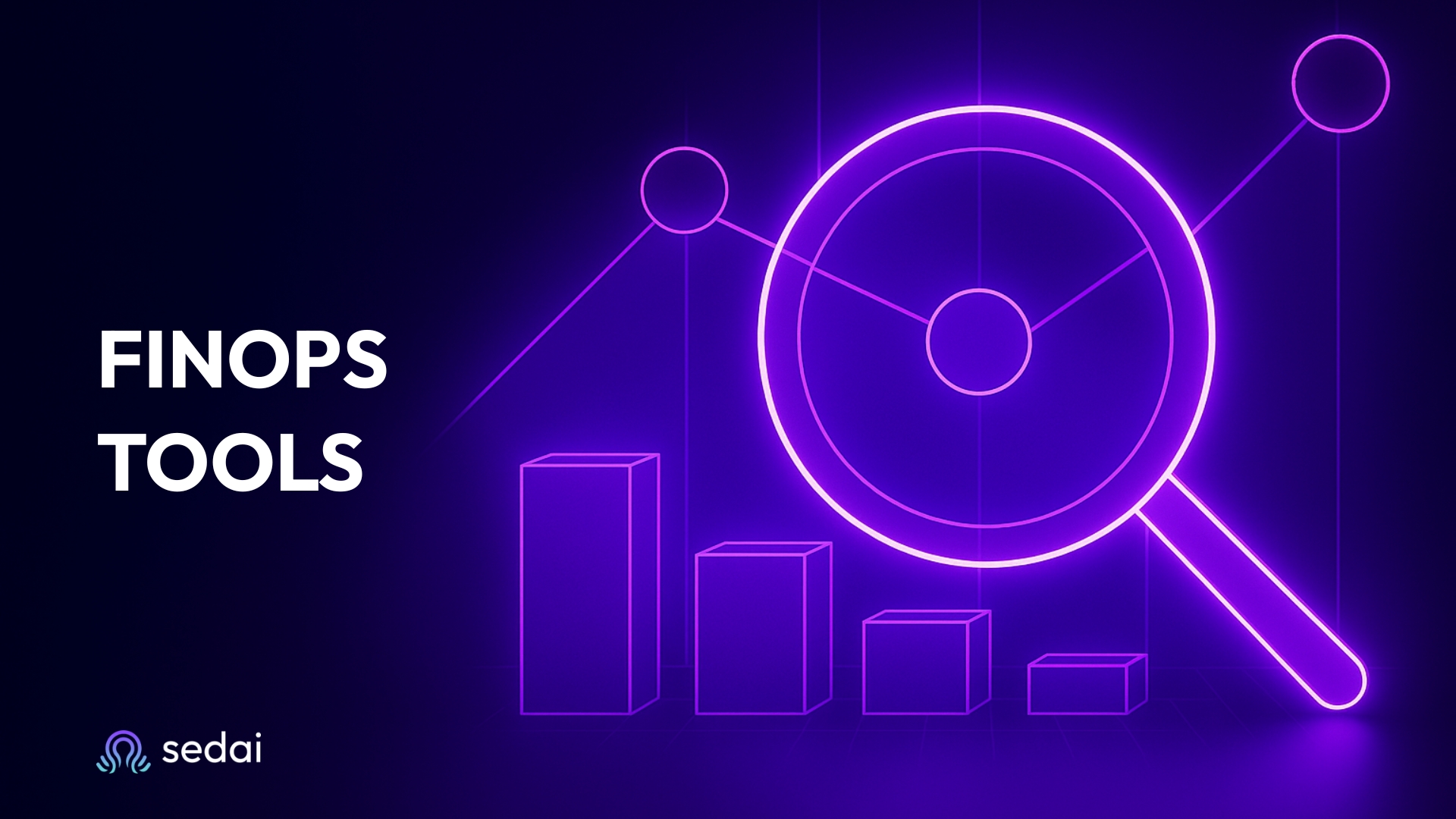
November 12, 2025
October 6, 2025
November 12, 2025
October 6, 2025

As cloud spending continues to rise, engineering teams face pressure to control costs without sacrificing performance. Traditional FinOps tools often fall short by only providing recommendations without automation, leaving teams to manually act on the insights. This is where autonomous platforms like Sedai come in. By actively adjusting resources, scaling, and optimizing costs in real-time, Sedai removes the manual effort, letting teams focus on their core work. With this level of automation, cloud resources stay cost-efficient and aligned with business needs.
As an engineering leader, you’ve probably faced the same pattern: finance flags overspending, engineers scramble to justify environments, and leadership demands answers. We’ve seen teams lose weeks cleaning up untagged resources, or fight over whether a cluster is “waste” or “critical QA.”
The FinOps Foundation’s 2025 survey found that workload optimization and waste reduction are now the top priorities for practitioners managing billions in cloud spend, a signal that cloud spend has become the central engineering headache.
Traditional FinOps tools promised to fix this by showing where money goes. Dashboards and recommendations surface where money is going, but without context or automation, engineers often can’t act on them safely. The result: costs keep climbing, finance gets frustrated, and engineering teams are left with more to do.
This blog explains how modern FinOps tools can bridge that gap. It examines the capabilities engineering leaders should look for and reviews leading FinOps tools in 2025.
FinOps, short for financial operations, is a discipline that blends finance and engineering to ensure that every dollar spent in the cloud delivers business value. FinOps tools support this discipline by collecting data from cloud providers, analyzing it, and presenting insights to drive cost optimization.
At a basic level, FinOps software ingests usage and billing data, allocates costs to teams or projects, surfaces anomalies, and suggests actions such as rightsizing or purchasing Reserved Instances. Many solutions integrate with DevOps pipelines to alert engineers when new resources exceed budget or policy.
Engineering leaders often face the question: “What does this change mean in my daily work?” The best FinOps tools address this by integrating directly into engineers’ workflows. For example, engineers might receive real-time alerts in Slack if their cloud spend exceeds predefined limits, or a CI/CD pipeline might automatically fail a build if a new workload breaches the budget.
Most vendors will tell you their tool “allocates costs,” “tracks anomalies,” and “optimizes usage.” That’s fine, but if you think a pretty dashboard is going to save you millions, we’ve got an AWS bill to sell you.
FinOps isn’t about “cost savings,” it’s about spend efficiency. If your platform helps you waste less money so you can spend more on things that matter (AI training runs, new regions, better redundancy), then it’s worth it. If it just makes your CFO feel better while engineers keep ignoring it, it’s not.
The industry doesn’t need another dashboard. It needs tools that actually do the work. Until then, a lot of what’s being sold as “FinOps” is just cloud bill theater.
The most effective platforms today go a step further: they operate autonomously. Instead of generating a backlog of recommendations for engineers to implement, these tools take safe, automated actions in real time: right-sizing resources, shutting down idle workloads, and keeping costs under control without piling extra work onto engineering teams.
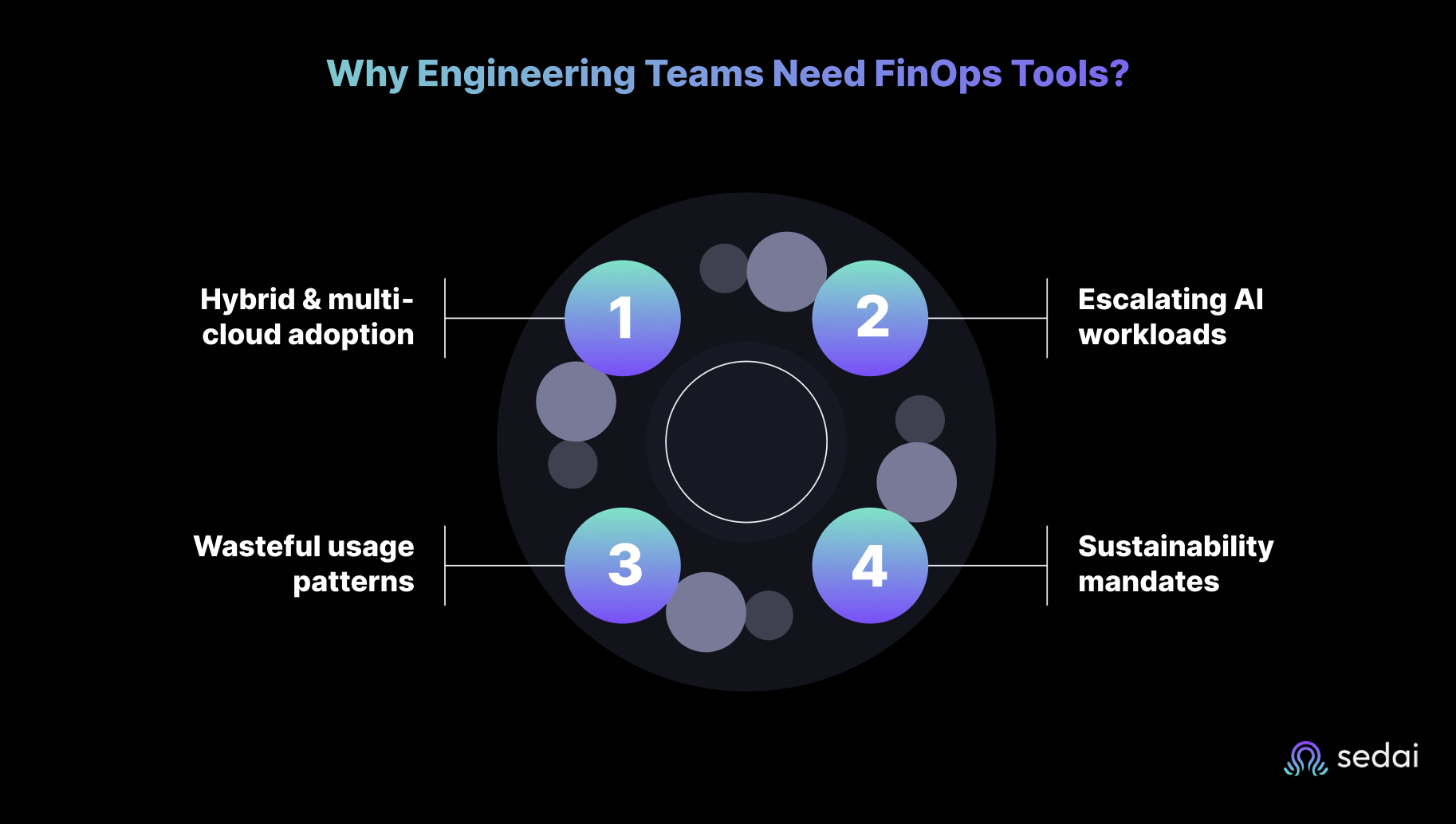
The cloud democratized infrastructure, enabling developers to provision resources on demand. That agility is fantastic for innovation, but it also creates sprawling environments and runaway bills.
Engineering teams prioritize performance and reliability, while finance focuses on cost. That separation creates inefficiency and misaligned incentives. It’s no surprise that Deloitte found half of organizations already have a dedicated FinOps team, with another 20% building one soon. Cloud complexity is forcing the issue.
Engineering leaders today are under pressure from every angle:
Deloitte found that 73% of companies now operate in hybrid environments, and 53% juggle multiple cloud providers (e.g., AWS + Azure or AWS + private VMware clusters). We often see engineering teams struggle to stitch together cost data across these environments. Without a unifying FinOps layer, tracking spend becomes a second full-time job.
The FinOps Foundation highlights AI as one of the fastest-growing spend categories. AI workloads will dominate cloud compute by 2029 (Gartner). In practice, we’ve seen teams underestimate how quickly generative AI services, especially GPU-intensive workloads, can drain budgets if guardrails aren’t in place.
Deloitte reports that 27% of cloud spend is wasted. In real terms, this often looks like orphaned storage volumes, overprovisioned instances kept for “safety,” or test environments left running over weekends. Without visibility, these small leaks compound into millions of dollars annually.
Sustainability has become a key business goal, with research showing that migrating to the cloud can reduce carbon emissions by up to 84% and deliver significant savings in total cost of ownership (30–40%). But many organizations still prioritize cost over sustainability. We often see engineering leaders caught in the middle: finance asks for savings, sustainability teams ask for greener workloads, and engineers lack real-time metrics to balance the two.
FinOps tools aim to help engineering teams address these pressures by providing visibility into usage patterns and aligning budgets with technical decisions. But traditional solutions often fall short. They provide data without context or recommendations without safe automation.
For example, a dashboard might flag underutilized instances but can’t downsize them automatically. It may identify unused EBS volumes, but it can’t safely remove them without understanding application dependencies.
We’ve watched engineers ignore entire queues of recommendations, not because they don’t care, but because they don’t have the bandwidth to vet and act on them safely.
That’s why today’s FinOps platforms can’t stop at reporting. They have to act. Forrester's 2024 Automation Survey reveals that organizations are increasingly adopting automation tools to manage multi-cloud environments, aiming to reduce manual interventions and improve efficiency.
The takeaway is simple: visibility is no longer enough. You need FinOps tools that don’t just point out inefficiencies but resolve them safely, automatically, and at scale.
Gartner says more than 68% of orgs are planning to increase cloud spend, but you don’t need an analyst to tell you that, just look at your AWS invoice. The question isn’t whether costs are going up; it’s whether you’re wasting money while they do.
Finance doesn’t want a pretty report. They want their dollars back. That’s why the best FinOps tools in 2025 aren’t “advisors”, they’re execution engines. They don’t nag you with recommendations. They fix the problem.
Let’s start with the one that actually lives up to that promise.
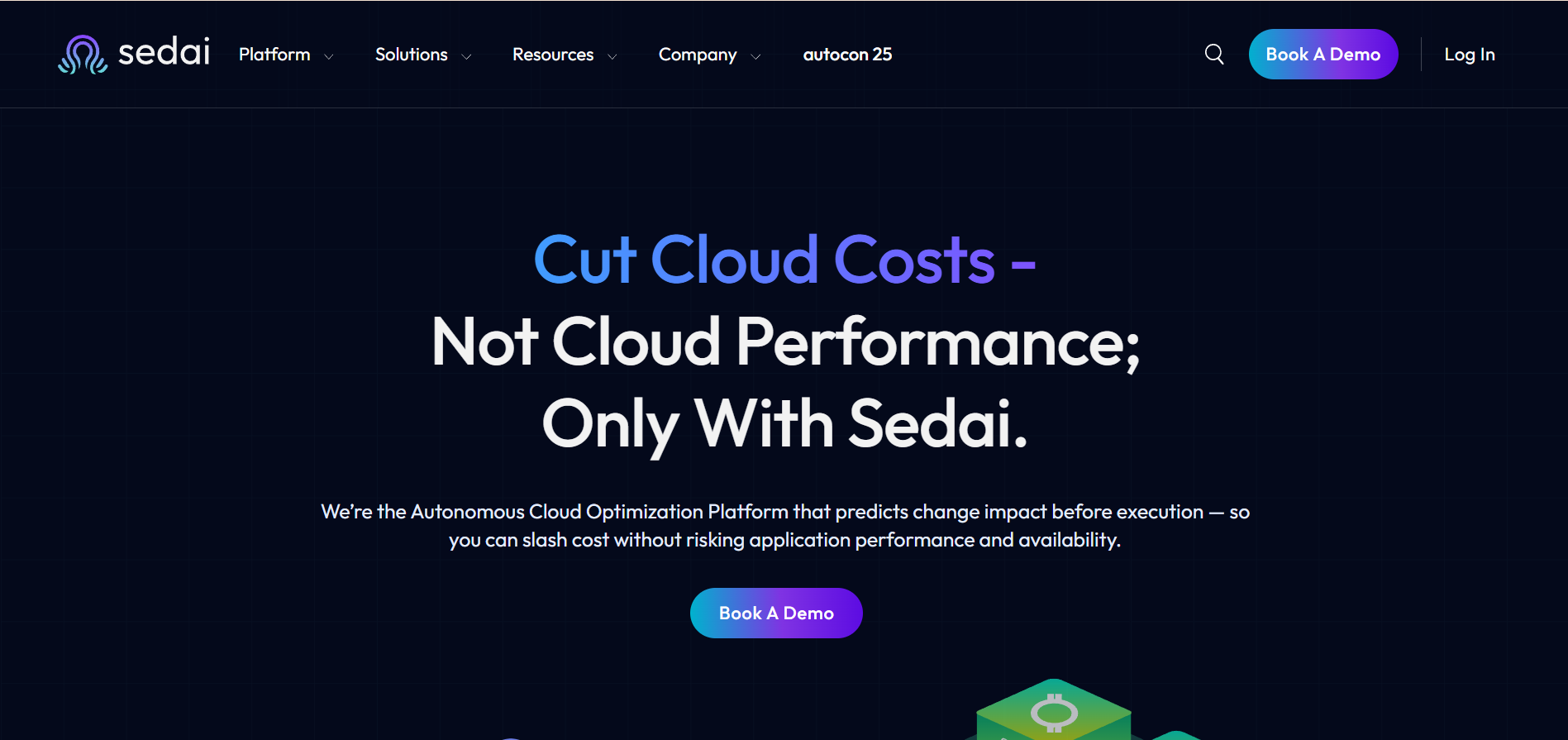
We’ve seen it firsthand: engineering teams caught in a constant struggle to manage cloud costs while maintaining system reliability. Traditional FinOps tools lack the context and ability to act on those insights. This leaves engineering teams scrambling to act on those insights manually.
Sedai takes a different path. Instead of waiting for engineers to react, it acts autonomously:
This real-time intelligence is what sets Sedai apart. Where most platforms show you what’s wrong, Sedai actually fixes it, adjusting commitments, rightsizing resources, and tuning workloads without manual input.
For enterprises, this means:
Best for: Enterprises managing large-scale, multi-cloud environments that need real-time optimization without constant manual adjustments and engineering teams who want to reduce cloud costs without adding more manual tasks to their plate.
Why Sedai Stands Out
Unlike most platforms that stop at visibility or orchestration, Sedai self-driving cloud closes the loop, operating as a self-optimizing layer that keeps your cloud efficient, secure, and cost-effective.
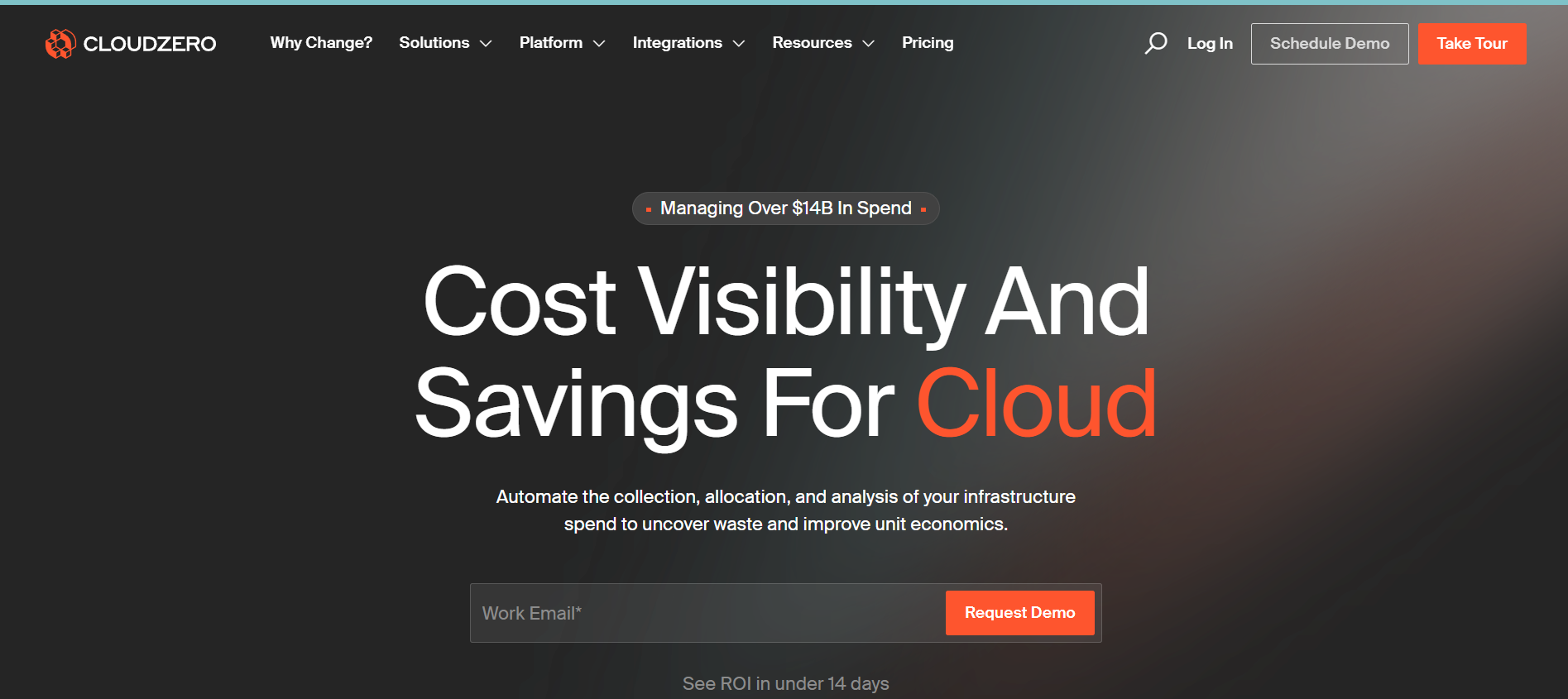
CloudZero provides engineering teams with granular insights into cloud spend, offering detailed visibility at the product, customer, and team level. It ensures that engineers understand the exact cost drivers in their cloud environments and can take action based on data that is meaningful to their day-to-day operations.
Key Features:
Best For: Engineering teams that want detailed cost visibility and the ability to align cloud costs with customer or product features. Best for companies that need clear, actionable insights to manage cloud spending efficiently.
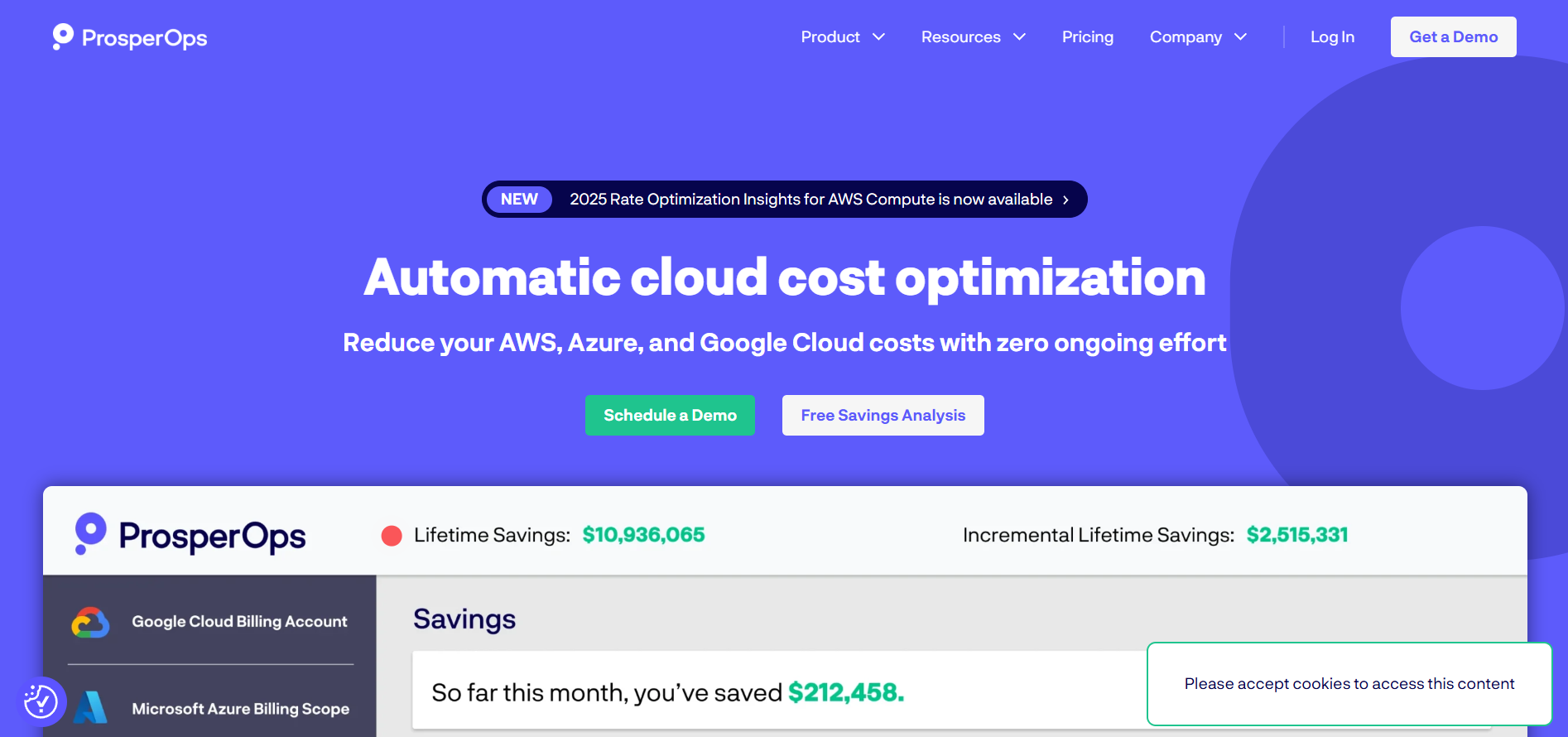
ProsperOps focuses on automating the management of AWS Reserved Instances (RIs) and Savings Plans, making it easier for engineering teams to optimize cloud spending. By using AI, it ensures that teams are maximizing savings from AWS pricing models without requiring manual effort or expertise.
Key Features:
Best For: Engineering teams using AWS Reserved Instances or Savings Plans. Teams that want to reduce manual management of RIs and maximize savings on long-term cloud usage.
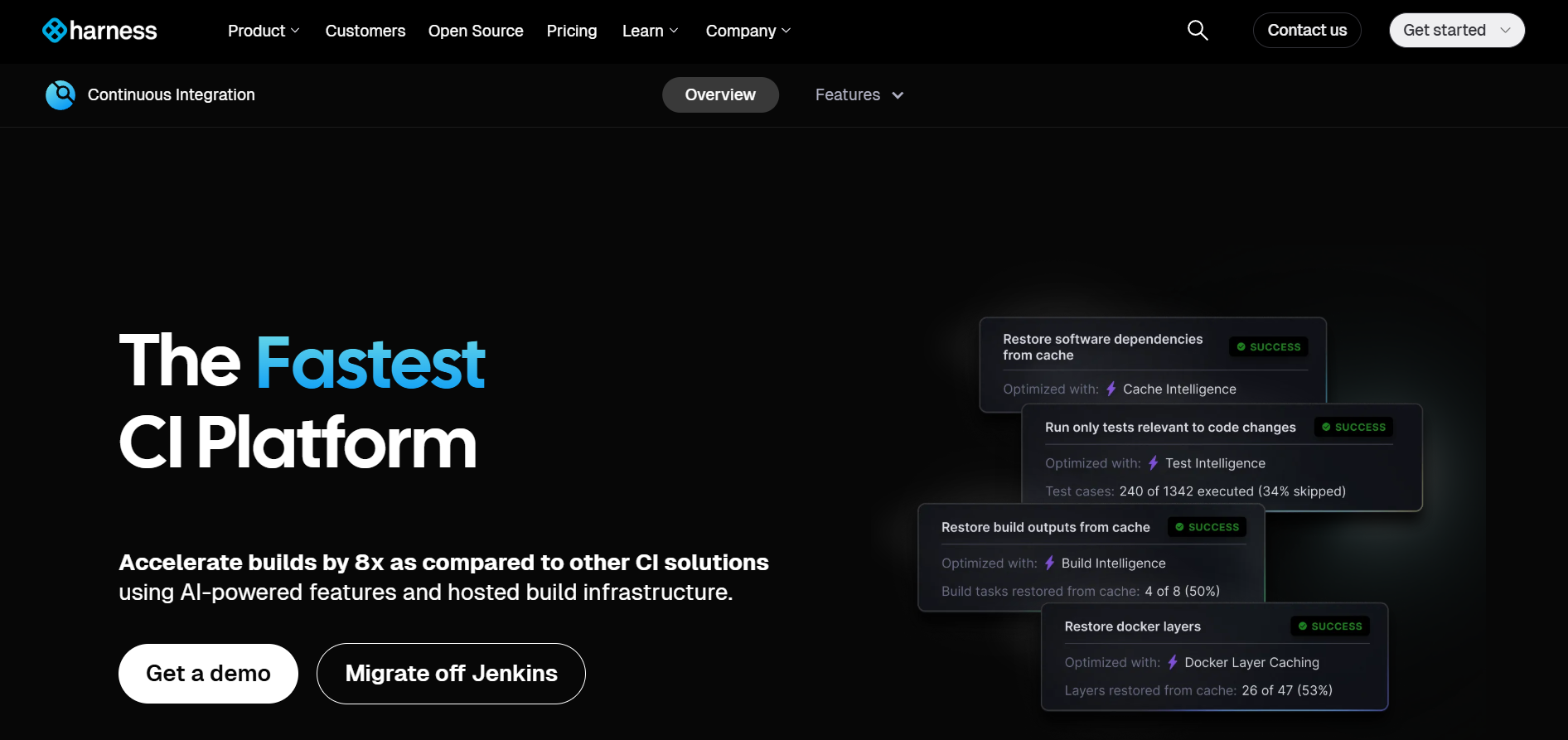
Harness offers a comprehensive cloud cost management platform that integrates seamlessly into CI/CD pipelines, providing real-time insights into cloud costs during software development. It allows engineering teams to identify and manage cloud cost overages proactively, without adding extra steps to the development process.
Key Features:
Best For: Engineering teams looking for a tool integrated directly into their CI/CD workflows. Perfect for teams seeking to manage cloud costs across multiple cloud providers without interrupting their development processes.

Kubecost specializes in providing visibility and optimization for Kubernetes environments. It allows engineering teams to track and allocate costs across clusters, namespaces, and services, making it an essential tool for teams leveraging Kubernetes at scale.
Key Features:
Best For: Engineering teams that use Kubernetes and need precise cost visibility and optimization capabilities across their containerized workloads.

Densify uses AI and machine learning to provide cloud cost optimization across multi-cloud environments, including hybrid cloud and containerized workloads. It helps engineering teams forecast resource needs and optimize cloud infrastructure for maximum efficiency.
Key Features:
Best For: Engineering teams managing hybrid cloud or multi-cloud environments, especially those using Kubernetes or VMware. Ideal for teams that need AI-driven insights into their resource needs.

CloudHealth by VMware is an enterprise-level platform that helps engineering teams optimize cloud costs while ensuring governance, security, and compliance. It integrates cloud cost management with performance and security optimization in a unified platform.
Key Features:
Best For: Large enterprises that need an all-in-one solution for cloud cost management, security, and governance across multi-cloud environments.

Apptio Cloudability is a multi-cloud financial management platform designed to provide visibility into cloud costs and resource usage across AWS, Azure, and Google Cloud. It offers detailed reports and automated recommendations for cost optimization.
Key Features:
Best For: Organizations using multi-cloud environments and needing detailed reporting and optimization across all cloud platforms.

CloudCheckr is a comprehensive cloud management platform that combines cost management with security, compliance, and governance. It provides visibility into cloud usage and cost trends, helping engineering teams avoid overspending and ensure security compliance.
Key Features:
Best For: Organizations looking for an all-in-one platform that combines cloud cost management with security and compliance.
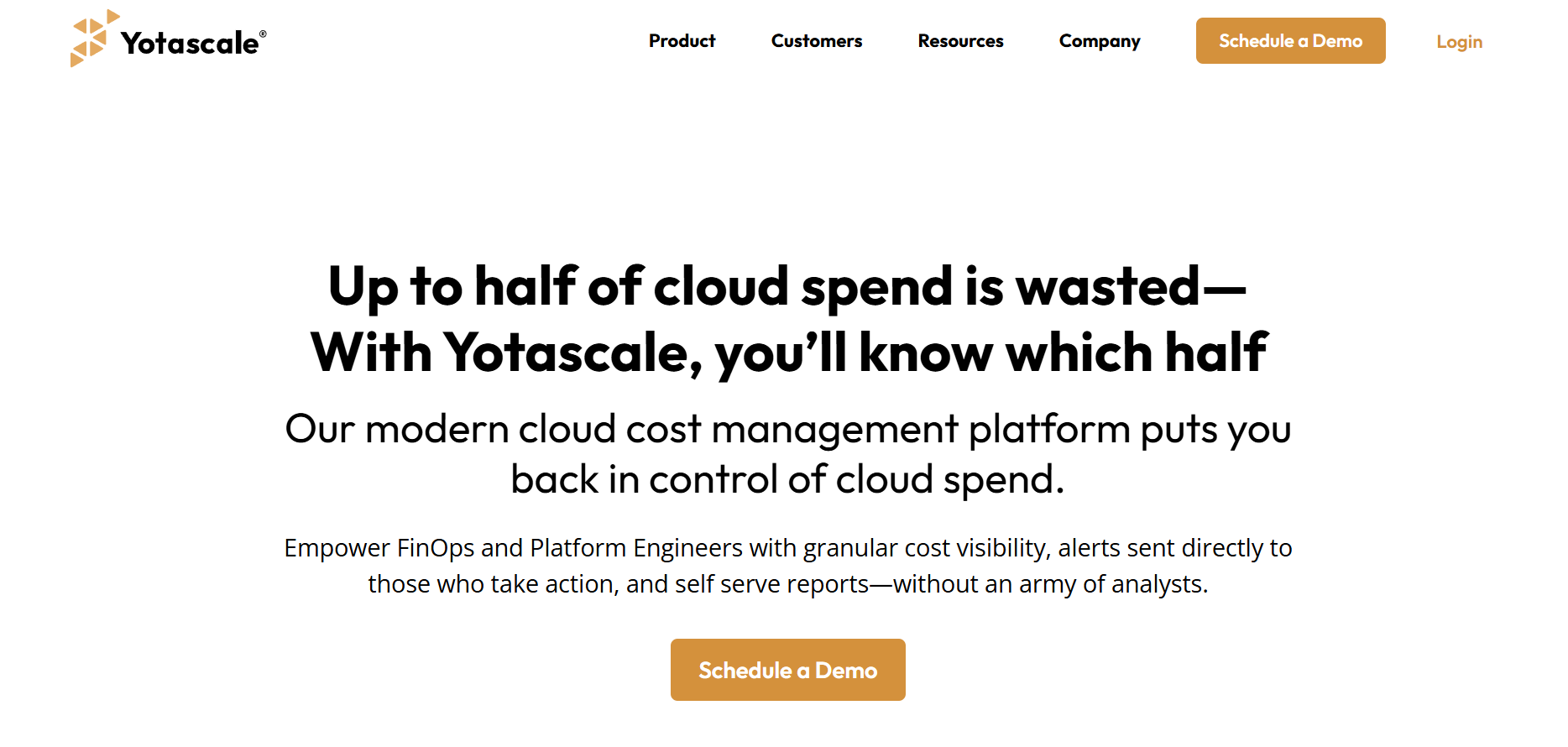
Yotascale is an intelligent cloud cost management platform that provides deep cost visibility and automated cost-saving recommendations for engineering teams. It helps teams track cloud costs and optimize spending by providing detailed insights and forecasts.
Key Features:
Best For: Engineering teams seeking automation and smart insights for managing cloud costs and optimizing cloud resource usage.

CloudBolt is a hybrid cloud FinOps platform that helps organizations manage multi-cloud environments with ease. It offers integration with public and private cloud platforms, allowing engineering teams to optimize costs and monitor usage across a range of cloud services.
Key Features:
Best For: Engineering teams managing multi-cloud environments who need an integrated platform for cost visibility and optimization.
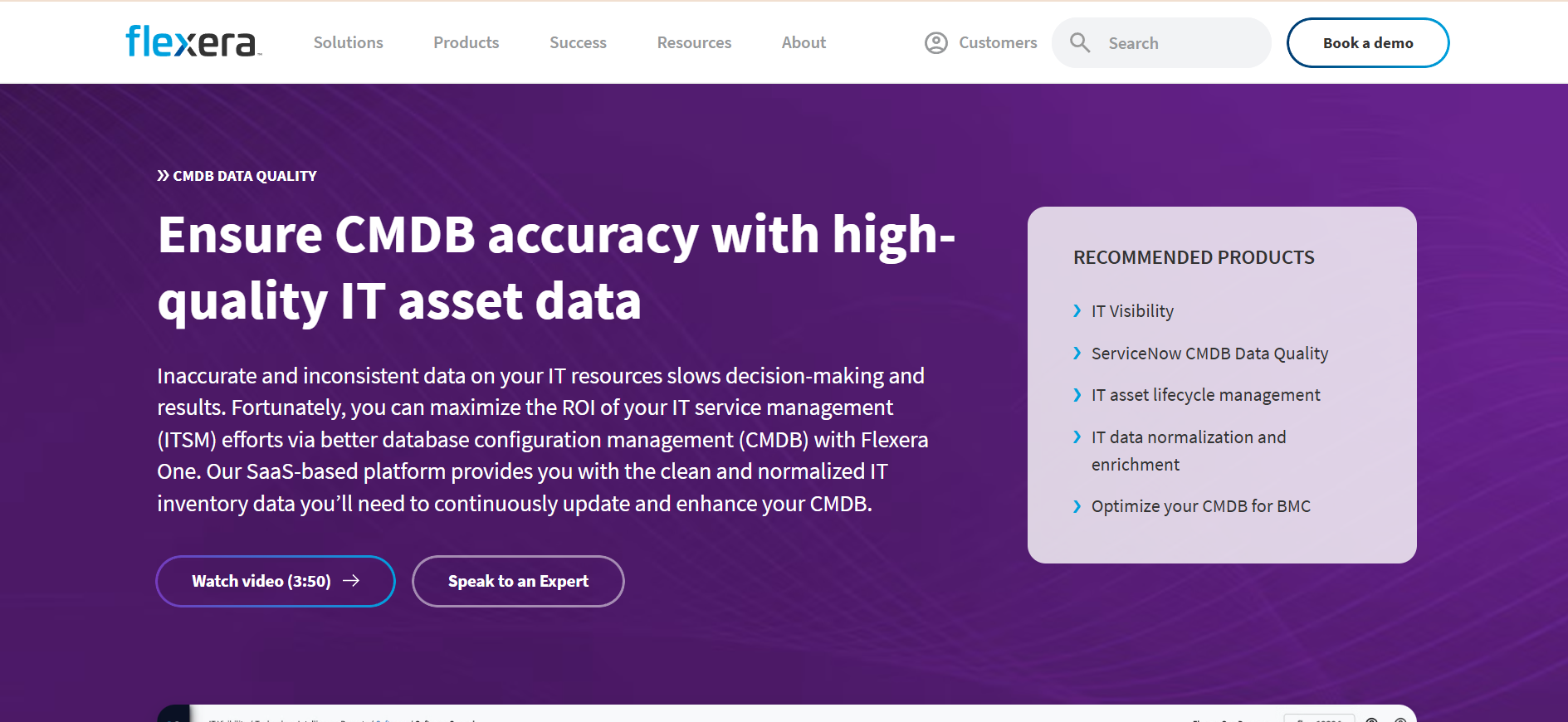
Flexera One is a comprehensive cloud financial management platform that offers deep insights into cloud usage and costs. It provides teams with the ability to manage cloud resources and expenses effectively, optimizing cloud spend while maintaining control over usage.
Key Features:
Best For: Engineering teams managing both multi-cloud and hybrid cloud environments who need a unified view of costs and usage.
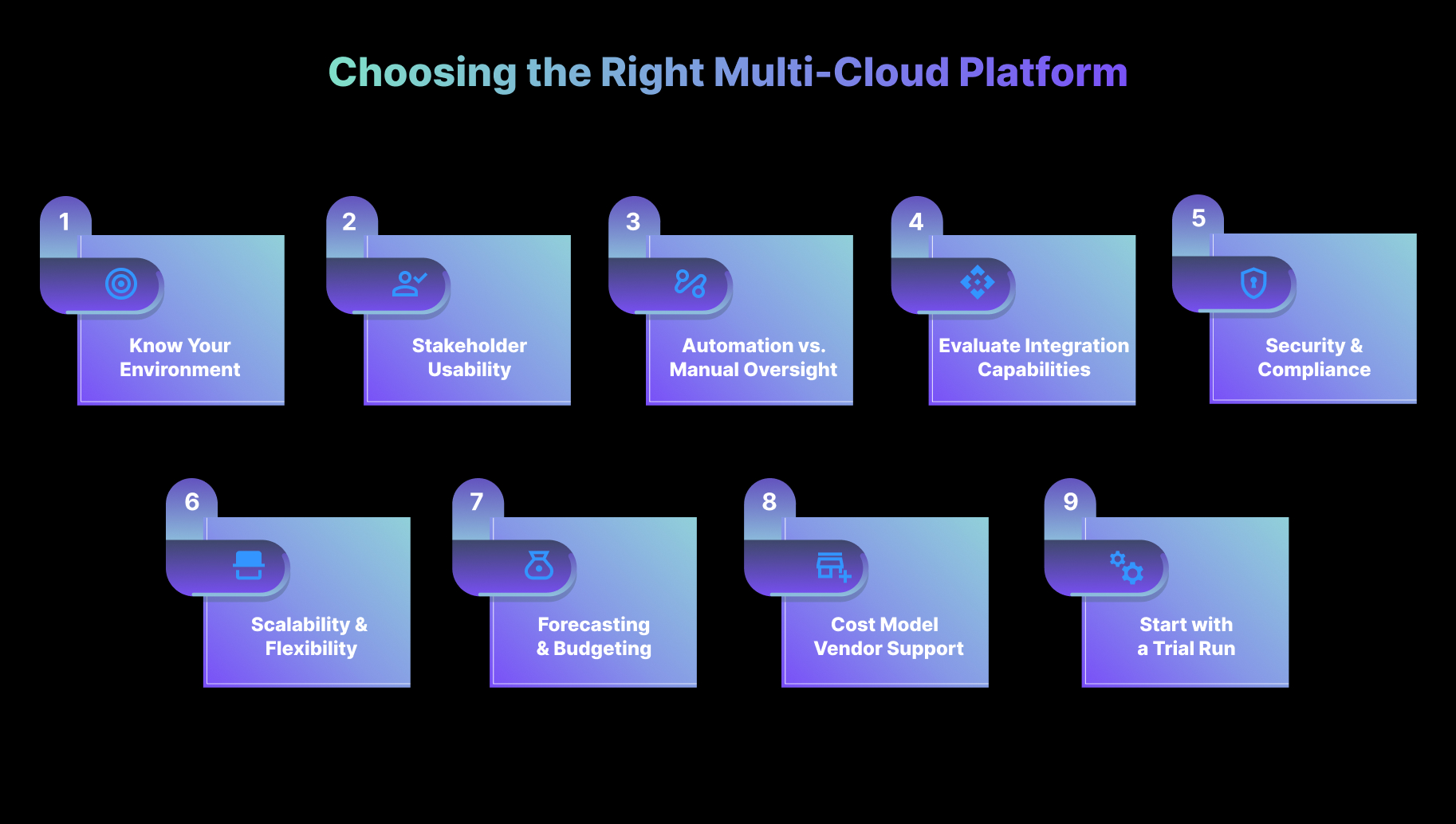
When we’ve worked closely with engineering leaders, one common thread we've noticed is the frustration of trying to manage cloud costs without the right tools. Engineering teams, particularly those managing multi-cloud or Kubernetes environments, find themselves buried in cloud billing data that’s difficult to parse and even harder to act on.
The right platform should make this mess easier to manage without adding more overhead. It should provide not just visibility, but actionable insights and autonomy, enabling teams to focus on innovation instead of cost wrangling.
Here’s what really matters when you’re selecting the best FinOps tool.
The first thing we always tell teams is: Know your cloud environment. Whether you're using a single cloud, a multi-cloud environment, or a hybrid setup (plus or minus Kubernetes), your FinOps tool must support these complexities.
For example, we’ve noticed that teams managing both AWS and Azure found that an AWS-only tool couldn't meet their needs. When choosing your FinOps tool, ensure it supports the platforms where you run workloads. Don't lock yourself into a solution that only covers a portion of your cloud footprint.
Different stakeholders will interact with the tool in different ways. From finance to engineers to DevOps teams, each group needs tailored functionality. Engineers will likely want integration with CI/CD pipelines, access to real-time data on cloud usage, and granular visibility into cost drivers. Finance teams need high-level reports to track budgets and forecast future spend. A dedicated FinOps team will need robust tools for forecasting, budgeting, and cost optimization.
We’ve seen organizations abandon otherwise powerful tools because they only worked well for one group. The best platforms balance high-level insights for finance with the granular detail engineers require.
Dashboards alone don’t scale. Too often, we’ve watched teams drown in weekly cost reports that surface problems but don’t solve them. If the platform stops at surfacing metrics and requires manual intervention to act, it simply shifts the burden to already stretched engineering teams.
What we’ve found most useful are platforms that automate actions in real time, adjusting resources when demand changes or shutting down underutilized capacity without waiting for human intervention. To safely adopt this level of autonomy, it’s important to start with controlled automation. Begin by enabling recommendations and monitoring their impact, then gradually introduce fully automated actions with built-in safeguards, ensuring smooth integration into your operations.
Sedai, for example, has taken this direction by focusing on autonomous optimization rather than just surfacing alerts. That kind of automation is what allows teams to spend less time firefighting and more time improving reliability.
Without the ability to seamlessly connect with your existing tools, you'll likely end up managing multiple sources of data. We've seen engineering teams struggle with manual data reconciliation when their FinOps tool didn't integrate with key platforms like ServiceNow, Jira, or their cloud providers.
It's not just about integration with the cloud platform. Check how well the tool integrates with your reporting or analytics tools. Look for API availability and pre-built integrations with your key tools. Ensure the tool will sync well with reporting, observability, and cloud platforms.
Cost management shouldn’t introduce security gaps. Strong IAM controls, data encryption, and compliance with standards like SOC 2 or HIPAA are non-negotiable, especially in regulated industries. Look for consistent policy enforcement across all clouds without manual workarounds.
As your cloud needs grow, the tool should scale without reconfiguration. We’ve had engineering leaders express frustration when their initial FinOps tool couldn't keep up with their growing infrastructure. The platform must be able to handle increasing workloads and adapt to new cloud providers, regions, and services.
One of the biggest challenges engineering teams face is predicting future cloud costs. If you don’t know what your cloud spend will be next month, how can you accurately plan for the future?
When working with finance and engineering teams, we’ve noticed that organizations that implement forecasting and budgeting as part of their FinOps strategy are better prepared for the financial impact of cloud usage.
Look for tools that allow teams to forecast cloud spend based on usage patterns, historical data, and growth projections. This will help teams set more accurate budgets and prevent over-provisioning.
The right FinOps platform should deliver value without introducing hidden costs. We’ve seen teams fall into price traps where tool expenses scale faster than their cloud spend, eroding savings instead of amplifying them. Evaluating pricing models upfront is critical, especially if you expect rapid growth.
Just as important is the level of vendor support you’ll receive. From our experience with large enterprise teams, dedicated support often makes the difference when unexpected issues surface during critical projects. A transparent cost model paired with strong support ensures that your FinOps investment remains sustainable and reliable as you scale.
Every tool looks good in a demo. We’ve seen teams realize gaps only when they put the platform into production-like conditions. Pilots reveal whether the tool integrates with your stack, respects guardrails, and actually saves time. Look for proof-of-concept runs with real workloads and stakeholders before signing a multi-year contract.
The FinOps market is crowded, but not all tools are equal. Legacy platforms stop at reporting, leaving engineers drowning in manual work. The best-performing teams we’ve seen don’t settle for that. They choose autonomous platforms that act as an extension of the engineering team, taking safe actions in real time, aligning finance and technology, and scaling with the business.
Cloud spend continues to rise, but it doesn’t have to spiral out of control. Research shows that a significant portion of cloud budgets is wasted on idle or oversized resources, while engineering teams rarely have the bandwidth to chase down every inefficiency.
FinOps was created to close that gap, but most tools stop short: they surface insights without reducing the operational burden. That’s why engineering leaders are turning to autonomous systems like Sedai, which go beyond reporting by continuously optimizing resources in real time.
Sedai integrates directly into engineering workflows, acting on cost and performance opportunities without manual intervention. It doesn’t just tell you what needs to be done. It acts autonomously, ensuring cost reductions and performance stability without engineering intervention.
Join us and gain full visibility and control over your cloud operations today.
Yes, provided they offer granular control and auditability. Sedai’s platform, for example, has executed over 100,000 production changes without causing service disruptions and allows teams to set policies governing which resources can be modified. Start with recommendation‑only mode, then gradually enable autonomous actions as trust builds.
Key metrics include percentage reduction in monthly cloud bills, improvements in utilization (CPU, memory, and network), time saved on cost analysis, and reductions in incidents related to misconfigured resources. Running a pilot with clear KPIs helps determine whether savings exceed licence costs.
Sustainable cloud practices reduce both costs and emissions. Migrating to public cloud can cut carbon emissions by more than 84%. Many tools now include metrics for power consumption and carbon footprint, helping teams make greener decisions alongside cost optimisation.
Cloud technologies evolve quickly. Review your platform at least annually or when major business changes occur, such as new compliance requirements, large‑scale migrations, or adoption of AI workloads. Continual measurement of key metrics (cost per unit, mean time to recovery, customer experience) will signal when a change is warranted.
October 6, 2025
November 12, 2025

As cloud spending continues to rise, engineering teams face pressure to control costs without sacrificing performance. Traditional FinOps tools often fall short by only providing recommendations without automation, leaving teams to manually act on the insights. This is where autonomous platforms like Sedai come in. By actively adjusting resources, scaling, and optimizing costs in real-time, Sedai removes the manual effort, letting teams focus on their core work. With this level of automation, cloud resources stay cost-efficient and aligned with business needs.
As an engineering leader, you’ve probably faced the same pattern: finance flags overspending, engineers scramble to justify environments, and leadership demands answers. We’ve seen teams lose weeks cleaning up untagged resources, or fight over whether a cluster is “waste” or “critical QA.”
The FinOps Foundation’s 2025 survey found that workload optimization and waste reduction are now the top priorities for practitioners managing billions in cloud spend, a signal that cloud spend has become the central engineering headache.
Traditional FinOps tools promised to fix this by showing where money goes. Dashboards and recommendations surface where money is going, but without context or automation, engineers often can’t act on them safely. The result: costs keep climbing, finance gets frustrated, and engineering teams are left with more to do.
This blog explains how modern FinOps tools can bridge that gap. It examines the capabilities engineering leaders should look for and reviews leading FinOps tools in 2025.
FinOps, short for financial operations, is a discipline that blends finance and engineering to ensure that every dollar spent in the cloud delivers business value. FinOps tools support this discipline by collecting data from cloud providers, analyzing it, and presenting insights to drive cost optimization.
At a basic level, FinOps software ingests usage and billing data, allocates costs to teams or projects, surfaces anomalies, and suggests actions such as rightsizing or purchasing Reserved Instances. Many solutions integrate with DevOps pipelines to alert engineers when new resources exceed budget or policy.
Engineering leaders often face the question: “What does this change mean in my daily work?” The best FinOps tools address this by integrating directly into engineers’ workflows. For example, engineers might receive real-time alerts in Slack if their cloud spend exceeds predefined limits, or a CI/CD pipeline might automatically fail a build if a new workload breaches the budget.
Most vendors will tell you their tool “allocates costs,” “tracks anomalies,” and “optimizes usage.” That’s fine, but if you think a pretty dashboard is going to save you millions, we’ve got an AWS bill to sell you.
FinOps isn’t about “cost savings,” it’s about spend efficiency. If your platform helps you waste less money so you can spend more on things that matter (AI training runs, new regions, better redundancy), then it’s worth it. If it just makes your CFO feel better while engineers keep ignoring it, it’s not.
The industry doesn’t need another dashboard. It needs tools that actually do the work. Until then, a lot of what’s being sold as “FinOps” is just cloud bill theater.
The most effective platforms today go a step further: they operate autonomously. Instead of generating a backlog of recommendations for engineers to implement, these tools take safe, automated actions in real time: right-sizing resources, shutting down idle workloads, and keeping costs under control without piling extra work onto engineering teams.

The cloud democratized infrastructure, enabling developers to provision resources on demand. That agility is fantastic for innovation, but it also creates sprawling environments and runaway bills.
Engineering teams prioritize performance and reliability, while finance focuses on cost. That separation creates inefficiency and misaligned incentives. It’s no surprise that Deloitte found half of organizations already have a dedicated FinOps team, with another 20% building one soon. Cloud complexity is forcing the issue.
Engineering leaders today are under pressure from every angle:
Deloitte found that 73% of companies now operate in hybrid environments, and 53% juggle multiple cloud providers (e.g., AWS + Azure or AWS + private VMware clusters). We often see engineering teams struggle to stitch together cost data across these environments. Without a unifying FinOps layer, tracking spend becomes a second full-time job.
The FinOps Foundation highlights AI as one of the fastest-growing spend categories. AI workloads will dominate cloud compute by 2029 (Gartner). In practice, we’ve seen teams underestimate how quickly generative AI services, especially GPU-intensive workloads, can drain budgets if guardrails aren’t in place.
Deloitte reports that 27% of cloud spend is wasted. In real terms, this often looks like orphaned storage volumes, overprovisioned instances kept for “safety,” or test environments left running over weekends. Without visibility, these small leaks compound into millions of dollars annually.
Sustainability has become a key business goal, with research showing that migrating to the cloud can reduce carbon emissions by up to 84% and deliver significant savings in total cost of ownership (30–40%). But many organizations still prioritize cost over sustainability. We often see engineering leaders caught in the middle: finance asks for savings, sustainability teams ask for greener workloads, and engineers lack real-time metrics to balance the two.
FinOps tools aim to help engineering teams address these pressures by providing visibility into usage patterns and aligning budgets with technical decisions. But traditional solutions often fall short. They provide data without context or recommendations without safe automation.
For example, a dashboard might flag underutilized instances but can’t downsize them automatically. It may identify unused EBS volumes, but it can’t safely remove them without understanding application dependencies.
We’ve watched engineers ignore entire queues of recommendations, not because they don’t care, but because they don’t have the bandwidth to vet and act on them safely.
That’s why today’s FinOps platforms can’t stop at reporting. They have to act. Forrester's 2024 Automation Survey reveals that organizations are increasingly adopting automation tools to manage multi-cloud environments, aiming to reduce manual interventions and improve efficiency.
The takeaway is simple: visibility is no longer enough. You need FinOps tools that don’t just point out inefficiencies but resolve them safely, automatically, and at scale.
Gartner says more than 68% of orgs are planning to increase cloud spend, but you don’t need an analyst to tell you that, just look at your AWS invoice. The question isn’t whether costs are going up; it’s whether you’re wasting money while they do.
Finance doesn’t want a pretty report. They want their dollars back. That’s why the best FinOps tools in 2025 aren’t “advisors”, they’re execution engines. They don’t nag you with recommendations. They fix the problem.
Let’s start with the one that actually lives up to that promise.

We’ve seen it firsthand: engineering teams caught in a constant struggle to manage cloud costs while maintaining system reliability. Traditional FinOps tools lack the context and ability to act on those insights. This leaves engineering teams scrambling to act on those insights manually.
Sedai takes a different path. Instead of waiting for engineers to react, it acts autonomously:
This real-time intelligence is what sets Sedai apart. Where most platforms show you what’s wrong, Sedai actually fixes it, adjusting commitments, rightsizing resources, and tuning workloads without manual input.
For enterprises, this means:
Best for: Enterprises managing large-scale, multi-cloud environments that need real-time optimization without constant manual adjustments and engineering teams who want to reduce cloud costs without adding more manual tasks to their plate.
Why Sedai Stands Out
Unlike most platforms that stop at visibility or orchestration, Sedai self-driving cloud closes the loop, operating as a self-optimizing layer that keeps your cloud efficient, secure, and cost-effective.

CloudZero provides engineering teams with granular insights into cloud spend, offering detailed visibility at the product, customer, and team level. It ensures that engineers understand the exact cost drivers in their cloud environments and can take action based on data that is meaningful to their day-to-day operations.
Key Features:
Best For: Engineering teams that want detailed cost visibility and the ability to align cloud costs with customer or product features. Best for companies that need clear, actionable insights to manage cloud spending efficiently.

ProsperOps focuses on automating the management of AWS Reserved Instances (RIs) and Savings Plans, making it easier for engineering teams to optimize cloud spending. By using AI, it ensures that teams are maximizing savings from AWS pricing models without requiring manual effort or expertise.
Key Features:
Best For: Engineering teams using AWS Reserved Instances or Savings Plans. Teams that want to reduce manual management of RIs and maximize savings on long-term cloud usage.

Harness offers a comprehensive cloud cost management platform that integrates seamlessly into CI/CD pipelines, providing real-time insights into cloud costs during software development. It allows engineering teams to identify and manage cloud cost overages proactively, without adding extra steps to the development process.
Key Features:
Best For: Engineering teams looking for a tool integrated directly into their CI/CD workflows. Perfect for teams seeking to manage cloud costs across multiple cloud providers without interrupting their development processes.

Kubecost specializes in providing visibility and optimization for Kubernetes environments. It allows engineering teams to track and allocate costs across clusters, namespaces, and services, making it an essential tool for teams leveraging Kubernetes at scale.
Key Features:
Best For: Engineering teams that use Kubernetes and need precise cost visibility and optimization capabilities across their containerized workloads.

Densify uses AI and machine learning to provide cloud cost optimization across multi-cloud environments, including hybrid cloud and containerized workloads. It helps engineering teams forecast resource needs and optimize cloud infrastructure for maximum efficiency.
Key Features:
Best For: Engineering teams managing hybrid cloud or multi-cloud environments, especially those using Kubernetes or VMware. Ideal for teams that need AI-driven insights into their resource needs.

CloudHealth by VMware is an enterprise-level platform that helps engineering teams optimize cloud costs while ensuring governance, security, and compliance. It integrates cloud cost management with performance and security optimization in a unified platform.
Key Features:
Best For: Large enterprises that need an all-in-one solution for cloud cost management, security, and governance across multi-cloud environments.

Apptio Cloudability is a multi-cloud financial management platform designed to provide visibility into cloud costs and resource usage across AWS, Azure, and Google Cloud. It offers detailed reports and automated recommendations for cost optimization.
Key Features:
Best For: Organizations using multi-cloud environments and needing detailed reporting and optimization across all cloud platforms.

CloudCheckr is a comprehensive cloud management platform that combines cost management with security, compliance, and governance. It provides visibility into cloud usage and cost trends, helping engineering teams avoid overspending and ensure security compliance.
Key Features:
Best For: Organizations looking for an all-in-one platform that combines cloud cost management with security and compliance.

Yotascale is an intelligent cloud cost management platform that provides deep cost visibility and automated cost-saving recommendations for engineering teams. It helps teams track cloud costs and optimize spending by providing detailed insights and forecasts.
Key Features:
Best For: Engineering teams seeking automation and smart insights for managing cloud costs and optimizing cloud resource usage.

CloudBolt is a hybrid cloud FinOps platform that helps organizations manage multi-cloud environments with ease. It offers integration with public and private cloud platforms, allowing engineering teams to optimize costs and monitor usage across a range of cloud services.
Key Features:
Best For: Engineering teams managing multi-cloud environments who need an integrated platform for cost visibility and optimization.

Flexera One is a comprehensive cloud financial management platform that offers deep insights into cloud usage and costs. It provides teams with the ability to manage cloud resources and expenses effectively, optimizing cloud spend while maintaining control over usage.
Key Features:
Best For: Engineering teams managing both multi-cloud and hybrid cloud environments who need a unified view of costs and usage.

When we’ve worked closely with engineering leaders, one common thread we've noticed is the frustration of trying to manage cloud costs without the right tools. Engineering teams, particularly those managing multi-cloud or Kubernetes environments, find themselves buried in cloud billing data that’s difficult to parse and even harder to act on.
The right platform should make this mess easier to manage without adding more overhead. It should provide not just visibility, but actionable insights and autonomy, enabling teams to focus on innovation instead of cost wrangling.
Here’s what really matters when you’re selecting the best FinOps tool.
The first thing we always tell teams is: Know your cloud environment. Whether you're using a single cloud, a multi-cloud environment, or a hybrid setup (plus or minus Kubernetes), your FinOps tool must support these complexities.
For example, we’ve noticed that teams managing both AWS and Azure found that an AWS-only tool couldn't meet their needs. When choosing your FinOps tool, ensure it supports the platforms where you run workloads. Don't lock yourself into a solution that only covers a portion of your cloud footprint.
Different stakeholders will interact with the tool in different ways. From finance to engineers to DevOps teams, each group needs tailored functionality. Engineers will likely want integration with CI/CD pipelines, access to real-time data on cloud usage, and granular visibility into cost drivers. Finance teams need high-level reports to track budgets and forecast future spend. A dedicated FinOps team will need robust tools for forecasting, budgeting, and cost optimization.
We’ve seen organizations abandon otherwise powerful tools because they only worked well for one group. The best platforms balance high-level insights for finance with the granular detail engineers require.
Dashboards alone don’t scale. Too often, we’ve watched teams drown in weekly cost reports that surface problems but don’t solve them. If the platform stops at surfacing metrics and requires manual intervention to act, it simply shifts the burden to already stretched engineering teams.
What we’ve found most useful are platforms that automate actions in real time, adjusting resources when demand changes or shutting down underutilized capacity without waiting for human intervention. To safely adopt this level of autonomy, it’s important to start with controlled automation. Begin by enabling recommendations and monitoring their impact, then gradually introduce fully automated actions with built-in safeguards, ensuring smooth integration into your operations.
Sedai, for example, has taken this direction by focusing on autonomous optimization rather than just surfacing alerts. That kind of automation is what allows teams to spend less time firefighting and more time improving reliability.
Without the ability to seamlessly connect with your existing tools, you'll likely end up managing multiple sources of data. We've seen engineering teams struggle with manual data reconciliation when their FinOps tool didn't integrate with key platforms like ServiceNow, Jira, or their cloud providers.
It's not just about integration with the cloud platform. Check how well the tool integrates with your reporting or analytics tools. Look for API availability and pre-built integrations with your key tools. Ensure the tool will sync well with reporting, observability, and cloud platforms.
Cost management shouldn’t introduce security gaps. Strong IAM controls, data encryption, and compliance with standards like SOC 2 or HIPAA are non-negotiable, especially in regulated industries. Look for consistent policy enforcement across all clouds without manual workarounds.
As your cloud needs grow, the tool should scale without reconfiguration. We’ve had engineering leaders express frustration when their initial FinOps tool couldn't keep up with their growing infrastructure. The platform must be able to handle increasing workloads and adapt to new cloud providers, regions, and services.
One of the biggest challenges engineering teams face is predicting future cloud costs. If you don’t know what your cloud spend will be next month, how can you accurately plan for the future?
When working with finance and engineering teams, we’ve noticed that organizations that implement forecasting and budgeting as part of their FinOps strategy are better prepared for the financial impact of cloud usage.
Look for tools that allow teams to forecast cloud spend based on usage patterns, historical data, and growth projections. This will help teams set more accurate budgets and prevent over-provisioning.
The right FinOps platform should deliver value without introducing hidden costs. We’ve seen teams fall into price traps where tool expenses scale faster than their cloud spend, eroding savings instead of amplifying them. Evaluating pricing models upfront is critical, especially if you expect rapid growth.
Just as important is the level of vendor support you’ll receive. From our experience with large enterprise teams, dedicated support often makes the difference when unexpected issues surface during critical projects. A transparent cost model paired with strong support ensures that your FinOps investment remains sustainable and reliable as you scale.
Every tool looks good in a demo. We’ve seen teams realize gaps only when they put the platform into production-like conditions. Pilots reveal whether the tool integrates with your stack, respects guardrails, and actually saves time. Look for proof-of-concept runs with real workloads and stakeholders before signing a multi-year contract.
The FinOps market is crowded, but not all tools are equal. Legacy platforms stop at reporting, leaving engineers drowning in manual work. The best-performing teams we’ve seen don’t settle for that. They choose autonomous platforms that act as an extension of the engineering team, taking safe actions in real time, aligning finance and technology, and scaling with the business.
Cloud spend continues to rise, but it doesn’t have to spiral out of control. Research shows that a significant portion of cloud budgets is wasted on idle or oversized resources, while engineering teams rarely have the bandwidth to chase down every inefficiency.
FinOps was created to close that gap, but most tools stop short: they surface insights without reducing the operational burden. That’s why engineering leaders are turning to autonomous systems like Sedai, which go beyond reporting by continuously optimizing resources in real time.
Sedai integrates directly into engineering workflows, acting on cost and performance opportunities without manual intervention. It doesn’t just tell you what needs to be done. It acts autonomously, ensuring cost reductions and performance stability without engineering intervention.
Join us and gain full visibility and control over your cloud operations today.
Yes, provided they offer granular control and auditability. Sedai’s platform, for example, has executed over 100,000 production changes without causing service disruptions and allows teams to set policies governing which resources can be modified. Start with recommendation‑only mode, then gradually enable autonomous actions as trust builds.
Key metrics include percentage reduction in monthly cloud bills, improvements in utilization (CPU, memory, and network), time saved on cost analysis, and reductions in incidents related to misconfigured resources. Running a pilot with clear KPIs helps determine whether savings exceed licence costs.
Sustainable cloud practices reduce both costs and emissions. Migrating to public cloud can cut carbon emissions by more than 84%. Many tools now include metrics for power consumption and carbon footprint, helping teams make greener decisions alongside cost optimisation.
Cloud technologies evolve quickly. Review your platform at least annually or when major business changes occur, such as new compliance requirements, large‑scale migrations, or adoption of AI workloads. Continual measurement of key metrics (cost per unit, mean time to recovery, customer experience) will signal when a change is warranted.